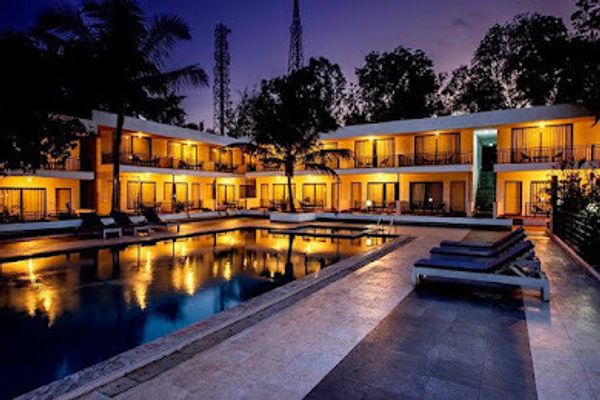The Great Himalayan Trail: Inside the Beauty and Challenge of Rupin Pass
 Palakshi Meharwal
17 May, 2025
10 mins read
45
Palakshi Meharwal
17 May, 2025
10 mins read
45

Introduction
Hidden within the folds of the Indian Himalayas lies a trek that is both breathtakingly beautiful and physically demanding—the Rupin Pass Trek. Part of the grander network known as the Great Himalayan Trail, this high-altitude trail offers a dynamic blend of snow-capped peaks, hanging villages, lush meadows, dense forests, and cascading waterfalls. For adventurers seeking a trail that captures the wild, untamed spirit of the Himalayas, Rupin Pass is a natural contender.
Spanning two northern states—Uttarakhand and Himachal Pradesh—Rupin Pass rises to an altitude of approximately 15,250 feet (4,650 meters). It is not just a hike; it is a trans-Himalayan odyssey that changes terrain, culture, and climate with every passing mile.
Why Rupin Pass Stands Out
Among the many treks in India, Rupin Pass distinguishes itself with its dramatic landscapes and the diversity it offers. From pine forests to snowfields, suspension bridges to narrow gorges, the trail is an ever-shifting canvas. Trekkers often find themselves in awe at how quickly the scenery morphs, making every segment of the journey feel like an entirely new trek.
Unlike more commercialized routes such as Kedarkantha or Triund, Rupin Pass is relatively less crowded, preserving its raw wilderness appeal. The route requires a solid level of physical fitness and mental preparedness, making it a favorite among seasoned trekkers who crave more than just Instagrammable views.
Route Overview and Key Highlights
The classic Rupin Pass trek typically starts from Dhaula in Uttarakhand and concludes at Sangla in Himachal Pradesh. The journey spans over 7–9 days depending on the chosen itinerary and pace. Here's a glimpse of the experience:
Dhaula to Sewa:
The trail begins along the Rupin River, through thick forests and charming hamlets. The village of Sewa, known for its intricately carved wooden temple, provides the first cultural immersion.
Sewa to Jhaka:
One of the most challenging yet mesmerizing parts of the trek, this section includes steep ascents and the famed "hanging village" of Jhaka, precariously perched on a cliffside.
Jhaka to Suruwas Thatch:
Trekkers enter alpine meadows dotted with wildflowers and cross snow bridges as they gradually ascend above the tree line.
Suruwas Thatch to Dhanderas Thatch:
This vast meadow offers panoramic views of surrounding peaks. It also provides acclimatization opportunities before the high-altitude crossing.
Dhanderas Thatch to Upper Waterfall Camp:
An awe-inspiring segment where trekkers scale a rock face alongside a roaring waterfall. The camp here, set beneath the looming pass, is often blanketed in snow.
Upper Waterfall Camp to Rupin Pass and Ronti Gad:
This is the summit day. The climb to Rupin Pass involves traversing snowfields and using trekking gear like microspikes. The top offers unmatched views of the Kinnaur-Kailash range before a steep descent into Ronti Gad.
Ronti Gad to Sangla:
The final descent winds through rhododendron forests and into the picturesque Baspa Valley, eventually ending at the charming town of Sangla.
Flora, Fauna, and Ecosystems
Rupin Pass is a living gallery of Himalayan biodiversity. In spring and early summer, the trails are flanked by blooming rhododendrons, orchids, and rare medicinal herbs. Birdwatchers might spot Himalayan monals, flycatchers, or even the elusive lammergeier circling above.
As one ascends, coniferous forests give way to alpine shrubs and high-altitude grasslands. The presence of blue sheep or bharal is not uncommon, and if one is particularly lucky, snow leopards have occasionally been sighted in these remote terrains—though such encounters are rare and fleeting.
Cultural Encounters Along the Trail
The trail offers more than just natural wonders. The villages scattered along the way are home to diverse communities with unique customs and traditions. In Jhaka, for instance, locals speak a dialect of the Kinnauri language and maintain architectural styles that reflect centuries-old craftsmanship.
Trekking through these areas gives travelers an intimate look into rural Himalayan life, often involving shared meals, temple visits, and spontaneous cultural exchanges.
Challenges and Preparations
Rupin Pass is considered a moderate-to-difficult trek. The altitude gain is significant, and the weather can be unpredictable. Trekkers often face sudden snowfall, especially in May or October, which are the most popular trekking seasons.
Acclimatization is crucial. Spending a night at higher camps like Dhanderas Thatch or Upper Waterfall Camp helps mitigate altitude-related symptoms. Physical training before the trek—focused on endurance, strength, and flexibility—greatly enhances the experience.
Packing essentials include:
- Layered clothing suitable for both warm valleys and freezing high camps
- Sturdy trekking boots
- Waterproof gloves and jackets
- Sunglasses and sunscreen for UV protection at high altitudes
- A well-stocked first-aid kit and any personal medication
Sustainability and Responsible Trekking
In recent years, responsible trekking practices have become increasingly emphasized on the Rupin Pass route. Organizations and local communities are working together to ensure the trail remains pristine for future generations.
Trekkers are encouraged to:
- Carry reusable water bottles and avoid single-use plastics
- Pack out all trash, including biodegradable items
- Stay on designated trails to avoid soil erosion
- Respect local customs and wildlife
Many trekking groups now include eco-awareness sessions as part of their pre-departure briefings, a step in the right direction for preserving this majestic landscape.
When to Visit
The Rupin Pass trek is best undertaken during two main windows: May–June and September–October. In the pre-monsoon period, trekkers are greeted by lush greenery and melting snow bridges. The post-monsoon months offer clear skies, crisp air, and striking autumn foliage.
July and August are typically avoided due to the risk of landslides and slippery trails from heavy monsoon rains.
Conclusion
For those seeking a trek that fuses physical challenge with raw Himalayan beauty, the Rupin Pass is an unforgettable journey. It’s a route where every bend brings new surprises—be it a waterfall erupting out of a cliff face, a shepherd’s hut nestled in the valley, or a vast snowfield that glows under the morning sun.
Whether you’re an experienced trekker or someone preparing for your first high-altitude challenge, the Rupin Pass promises more than just adventure—it offers perspective, serenity, and a profound connection with nature.
Written By:
Palakshi Meharwal



Hotels at your convenience
Now choose your stay according to your preference. From finding a place for your dream destination or a mere weekend getaway to business accommodations or brief stay, we have got you covered. Explore hotels as per your mood.





